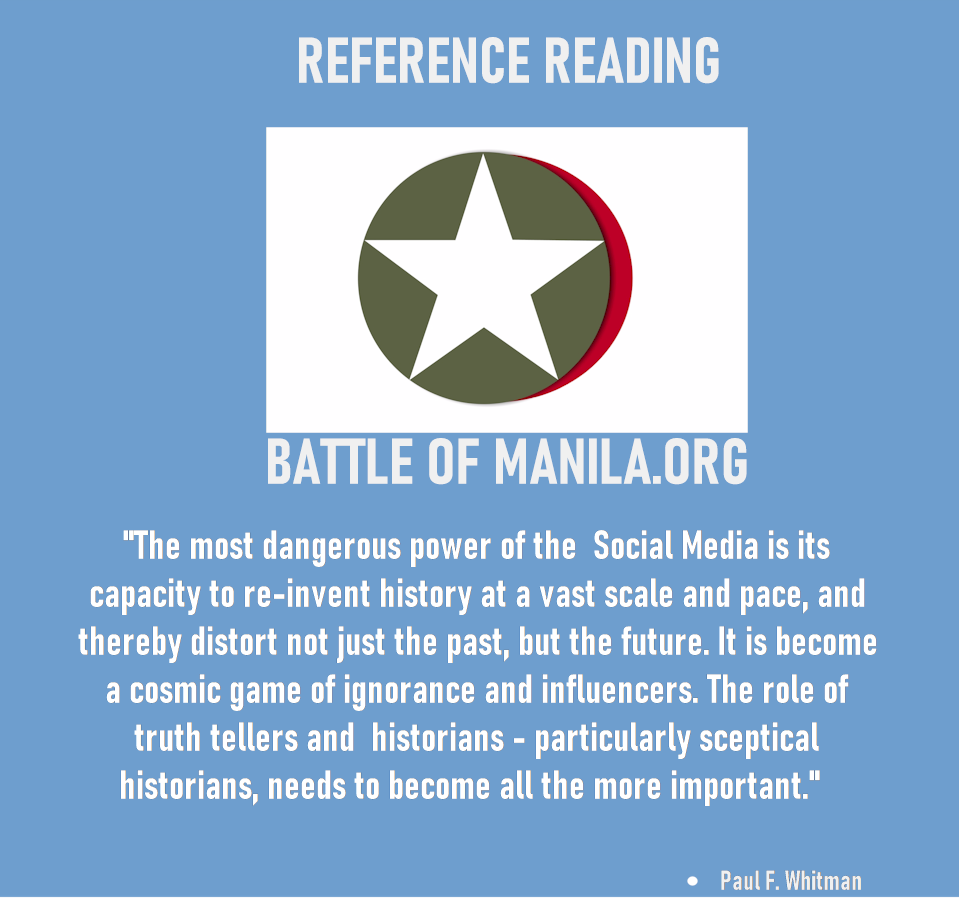|
CORREGIDOR - THE DARK YEARS,
A RESURRECTION AS A
MEMORIAL TO HISTORY, AND THE EFFECT OF THE COVID-WUHAN VIRUS
SETS IN.
Corregidor had become the focus of attention twice during WWII, but
post-war it fell into a 'dark age' in which it was closed to most
everyone except the Military. It's a 'dark age' because rarely did
anything which happened there escape into common knowledge.
We get occasional glimpses of what was going on, though. Despite
being under miilitary control, the island suffered severe
scrapping (a politically correct description of wholesale thievery).
Various military programs and exercises were held. The US used
it for annual exercises of mobile radar units - this we know because
we have a photo of Lee Harvey Oswald there during one of his unit's
annual exercises. The Philippine Army also used it for training
purposes. This we know because in 1968, a number of Moro army
recruits who mutinied upon learning the purpose of their training
were massacred near Kindley Field, lest the secret training program
become widely known. Just how many were murdered remains
a secret, but the fact that a massacre occurred took place even went
before the Philippine Supreme Court. The Jabida Massacre is now
widely known. In 1986
the
then Ministry of Tourism (now Department of Tourism, or DOT),
together with the Philippine Tourism Authority (now Tourism
Infrastructure and Enterprise Authority, or TIEZA) as assignees,
entered into a memorandum of agreement with the then Ministry of
National Defense (now the Department of National Defense), as
assignor, to develop the historic Island of Corregidor, as well as
the other surrounding islands, into a major tourist attraction of
the Philippines. To pursue PTA’s obligations and objectives for
Corregidor Island, Corregidor Foundation, Inc. (CFI) was
incorporated 1987. At the time, Corregidor became one of the
Philippines most popular tourism attractions.
Unfortunately,
with the passage of years, Corregidor has deteriorated. Not at
first, of course, and not deliberately.. It maintained its
popularity in a market that was gradually changing, as WWII veterans
and their families no longer made the pilgrimage to visit the WWII
battlefields which had been their heritage. Each year, there
were fewer veterans, and fewer tourists.
With the closure of
the tourist industry
in its entirety
caused by the reactions to the Covid 19 Pandemic, Corregidor ceased
to operate as a vibrant, active tourist destination.
It began to whither. Sun Cruises, which provided the daily tourist
transport to the island, ceased to trade, and sold their boats.
Corregidor Inn, refurbished at great cost, lost its guests. Sun
Cruises surrendered their management rights. CFI, which earned its
income from tourism, no longer had a consistent tourist stream of
income from which to draw its lifeblood. Considerably weakened,
Corregdor has been unable to re-establish a cash flow from which its
governance might recommence its role as a historical memorial to the
sacrifices of WWII. CFI, which was created to protect the
island, was shown to all to have insufficient power or influence to
prevent the removal of gun barrels from Battry Hearn and Battery
Crockett, the barrels being removed to create a faux
Disney-style attraction on an artificial beach facing Manila Bay.
Small tours are able to visit the island, but the market has
changed.
It needs to be reinvented.
|
THE
GUINEA GOLD COLLECTION
The four-page printed newspaper 'Guinea Gold' was published
daily, seven days a week with an American edition of 40,000 and an
Australian of 20,000. It was first published on 19 November 1942
with 6,700 copies. Originally printed at Port Moresby, it later went
to press in Lae, serving the South West Pacific area. These images,
collected bymy father ( Paul C. Whitman) and found years later
in his footlocker, are provided solely for the purpose of
research and study. Though for me, they are a part of my heritage.
|
|



